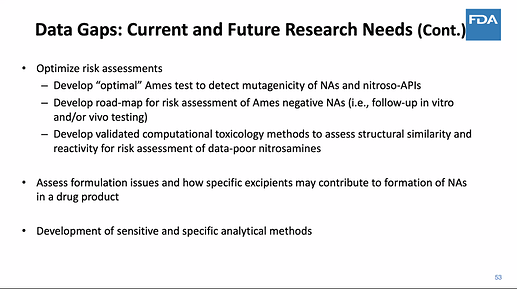Just to add some color and relevance to what we are all discussing here. If you participated in this morning PhARMA Nitrosamine Workshop (Invite here: PhARMA - Global Workshop on Nitrosamine *FREE*) you heard Dr. Aisar Atrakchi from FDA (CDER) presenting:
-
Case study #1: Nitrites in the formulation reacted with an API to form a nitrosamine drug substance-related impurity. The review team (FDA) concluded that the impurity of interest had sufficient data to indicate a mutagenic risk, BUT inadequate data on carcinogenic potential. The review team recommended that the acceptable intake (AI) should not be adjusted using ‘Less-than-lifetime’ principles.
-
Data Gps: Current and Future Research Needs: Assess formulation issues and how specific excipients may contribute to the formation of NAs in a drug product
